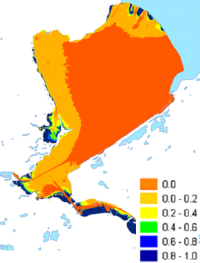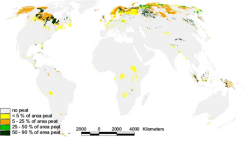Spatial analysis tool to support management plansHABITAT is a spatial analysis tool, especially designed for ecological assessment to:
The tool is also usefull for other spatial analysis where grid operations are needed. In most cases reponse curves are used to assess effects. For example for the calculation of flood risk or damages. HABITAT is a tool to support development of management plans by systematically:
The effects of several pressures in terms of measures or autonomous developments by making a difference map of the reference sistuation and the new situation. The ecological situation can be determined by analysing the effects on environmental conditions and the direct influence of land use and water management. HABITAT is developed by Deltares and Ministry of Transport, Public works and Water management How does it work?Input for the HABITAT tool are 1) digital maps with for example information on environmental conditions, land use, water management, and 2) response curves which describe the habitat suitability, damage or flood risk. Maps are in grid format. For the calculation the GIS tool PCRASTER is used. Output of HABITAT are maps or tables.
HABITAT determines the impact of (changes) in environmental conditions on ecology or other functions (damage or flood risk) by means of process-effect chains. For this purpose the user can use predefined reponse curves or make user-specific curves.
|
|
    |

